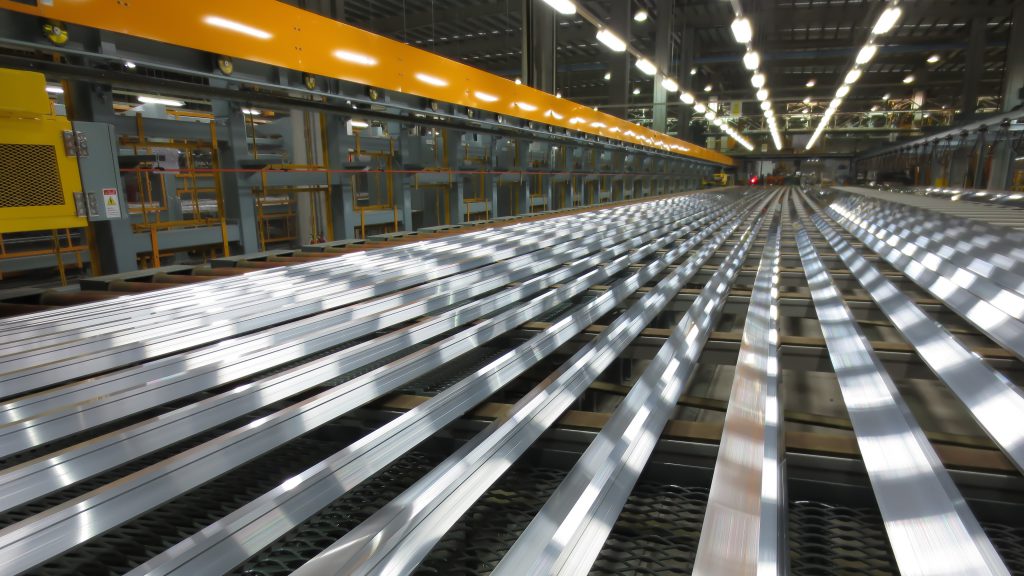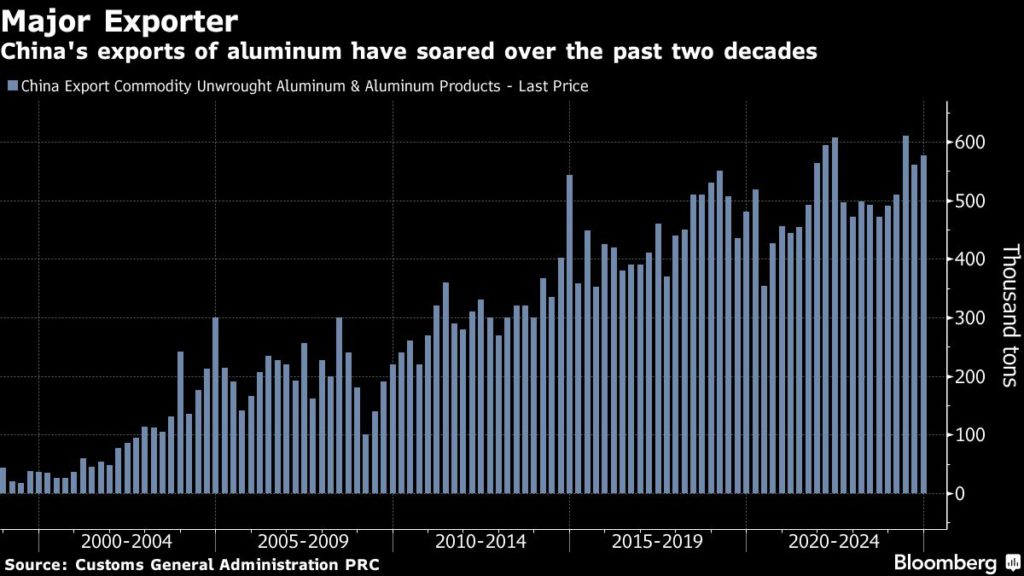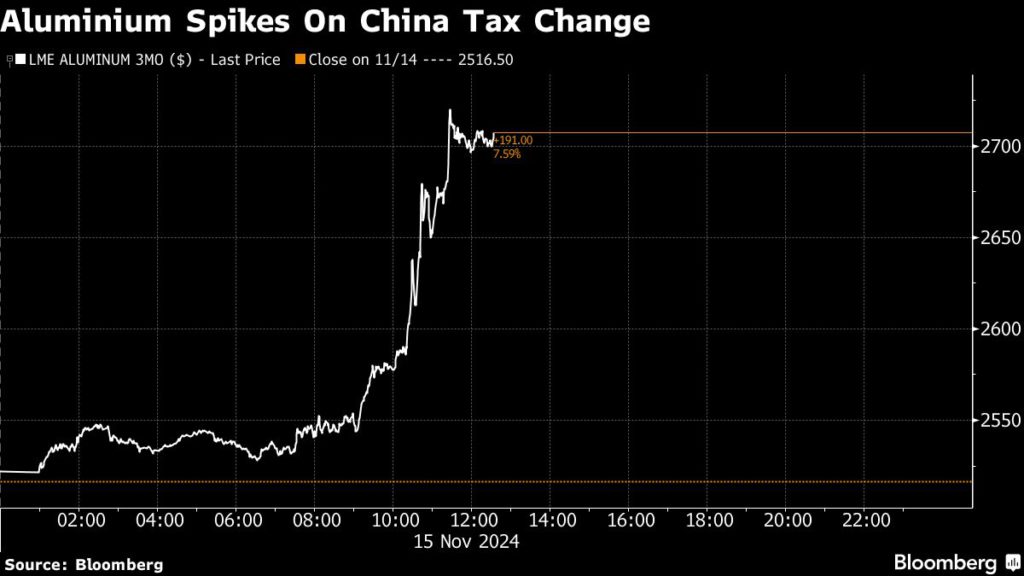Aluminum price soars as China cancels tax incentive on exports

Aluminum soared as China announced it was removing a tax rebate that covers over 5 million tons of exports of the metal.
Futures in London jumped as much as 8.5% following the announcement from the country’s Ministry of Finance, which didn’t give a reason for the change. China’s aluminum industry historically has exported significant amounts of the metal as semi-finished products, which are used in value added manufacturing or simply re-melted for use as primary metal.
In the near term, the measure could contain flows from China. But the capacity for output growth elsewhere is limited, so Chinese producers have room to shift tax cost to overseas buyers, analysts from Shanghai Metal Market said in a note. The measure may also boost exports of high value-added aluminum products.
“In principle the way the market would solve the shortfall is to build up the export arbitrage from China – so the LME price would rally strongly and that incentivizes Chinese exporters to ship products,” said Duncan Hobbs, who heads up research at trader Concord Resources.

Chinese state-owned research organization Antaike said the measure covers product exports that were worth 17.7 billion yuan ($2.4 billion) last year, or 5.2 million tons. The move has also sent share prices for aluminum producers outside China higher. Norsk Hydro ASA rose as much as 7.3% in Oslo, while Rio Tinto Plc jumped 1.9% in London.
The export tax rebate was also removed for copper and lowered for some refined oil, solar, battery and non-metallic mineral products. China has faced mounting criticism for some of its trade practices, and its decision could be part of a strategy to confront the incoming Trump administration, said Ewa Manthey, a commodities strategist at ING Bank NV.
“This could be seen as a strategic move in the context of trade tensions following Trump’s win in the US presidential elections,” she said. “China might use this as a leverage in trade negotiations, by showing its ability to influence global market dynamics.”
Earlier Friday, industrial metals had been boosted by retail sales figures that showed consumption growth nearly caught up to factory output in the world’s biggest importer of metals. Thus far, China had experienced a lopsided recovery, where household spending had trailed production, held back by sluggish sentiment among shoppers and the private sector.
Citigroup Inc. upgraded its growth forecast for China to 5% for 2024, though it cautioned tariff concerns would be “the main source of growth concern.”

Industrial metals had drifted lower since late-September and were on track for their seventh consecutive weekly fall. The greenback’s spike since Donald Trump’s victory, which makes commodities priced in the currency less appealing, added to the bearish sentiment. On Friday, the dollar retreated.
Aluminum’s price jump was the biggest since April, and futures traded 5.3% higher as of 1:30 p.m. on the London Metal Exchange, at $2,651 a ton. Copper, zinc and nickel also gained.
(By Archie Hunter and Jack Ryan)
More News
Capital signs civil works, tailings contract with Reko Diq
The contract will run through December 2028 and is expected to generate over $60 million in annual revenue.
April 02, 2025 | 03:31 pm
PDAC video: Energy Fuels produces rare earths using fast process, CEO says
The company made on-spec neodymium-praseodymium in less than a week at its White Mesa uranium mill.
April 02, 2025 | 12:52 pm
{{ commodity.name }}
{{ post.title }}
{{ post.excerpt }}
{{ post.date }}



Comments